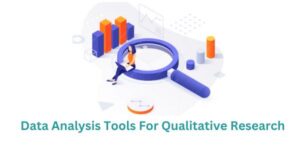
Welcome to our guide on 5 lesser-known tools for studying information in a different way – specifically designed for understanding and interpreting data in qualitative research. Data analysis tools for qualitative research are specialized instruments designed to interpret non-numerical data, offering insights into patterns, themes, and relationships.
These tools enable researchers to uncover meaning from qualitative information, enhancing the depth and understanding of complex phenomena in fields such as social sciences, psychology, and humanities.
In the world of research, there are tools tailored for qualitative data analysis that can reveal hidden insights. This blog explores these tools, showcasing their unique features and advantages compared to the more commonly used quantitative analysis tools.
Whether you’re a seasoned researcher or just starting out, we aim to make these tools accessible and highlight how they can add depth and accuracy to your analysis. Join us as we uncover these innovative approaches, offering practical solutions to enhance your experience with qualitative research.
Tool 1:MAXQDA Analytics Pro
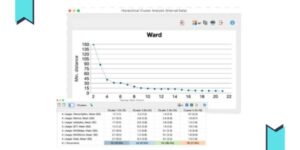
MAXQDA Analytics Pro emerges as a game-changing tool for qualitative data analysis, offering a seamless experience that goes beyond the capabilities of traditional quantitative tools.
Here’s how MAXQDA stands out in the world of qualitative research:
Advanced Coding and Text Analysis: MAXQDA empowers researchers with advanced coding features and text analysis tools, enabling the exploration of qualitative data with unprecedented depth. Its intuitive interface allows for efficient categorization and interpretation of textual information.
Intuitive Interface for Effortless Exploration: The user-friendly design of MAXQDA makes it accessible for researchers of all levels. This tool streamlines the process of exploring qualitative data, facilitating a more efficient and insightful analysis compared to traditional quantitative tools.
Uncovering Hidden Narratives: MAXQDA excels in revealing hidden narratives within qualitative data, allowing researchers to identify patterns, themes, and relationships that might be overlooked by conventional quantitative approaches. This capability adds a valuable layer to the analysis of complex phenomena.
In the landscape of qualitative data analysis tools, MAXQDA Analytics Pro is a valuable asset, providing researchers with a unique set of features that enhance the depth and precision of their analysis. Its contribution extends beyond the confines of quantitative analysis tools, making it an indispensable tool for those seeking innovative approaches to qualitative research.
Tool 2: Quirkos
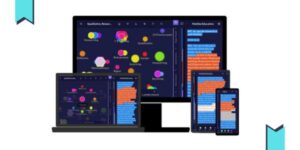
Quirkos, positioned as data analysis software, shines as a transformative tool within the world of qualitative research.
Here’s why Quirkos is considered among the best for quality data analysis: Visual Approach for Enhanced Understanding: Quirkos introduces a visual approach, setting it apart from conventional analysis software.
This unique feature aids researchers in easily grasping and interpreting qualitative data, promoting a more comprehensive understanding of complex information.
User-Friendly Interface: One of Quirkos’ standout features is its user-friendly interface.
This makes it accessible to researchers of various skill levels, ensuring that the tool’s benefits are not limited to experienced users.
Its simplicity adds to the appeal for those seeking the best quality data analysis software.
Effortless Pattern Identification: Quirkos simplifies the process of identifying patterns within qualitative data.
This capability is crucial for researchers aiming to conduct in-depth analysis efficiently.
The tool’s intuitive design fosters a seamless exploration of data, making it an indispensable asset in the world of analysis software.
Quirkos, recognized among the best quality data analysis software, offers a visual and user-friendly approach to qualitative research. Its ability to facilitate effortless pattern identification positions it as a valuable asset for researchers seeking optimal outcomes in their data analysis endeavors.
Tool 3: Provalis Research WordStat
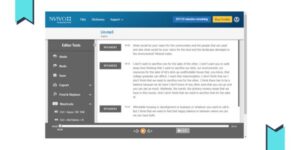
Provalis Research WordStat stands out as a powerful tool within the world of qualitative data analysis tools, offering unique advantages for researchers engaged in qualitative analysis:
WordStat excels in text mining, providing researchers with a robust platform to delve into vast amounts of textual data. This capability enhances the depth of qualitative analysis, setting it apart in the landscape of tools for qualitative research.
Specializing in content analysis, WordStat facilitates the systematic examination of textual information. Researchers can uncover themes, trends, and patterns within qualitative data, contributing to a more comprehensive understanding of complex phenomena.
WordStat seamlessly integrates with qualitative research methodologies, providing a bridge between quantitative and qualitative analysis. This integration allows researchers to harness the strengths of both approaches, expanding the possibilities for nuanced insights.
In the domain of tools for qualitative research, Provalis Research WordStat emerges as a valuable asset. Its text mining capabilities, content analysis expertise, and integration with qualitative research methodologies collectively contribute to elevating the qualitative analysis experience for researchers.
Tool 4: ATLAS.ti
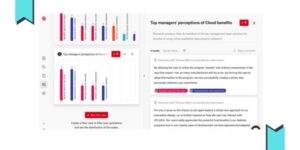
ATLAS.ti proves to be a cornerstone in the world of qualitative data analysis tools, offering distinctive advantages that enhance the qualitative analysis process:
Multi-Faceted Data Exploration: ATLAS.ti facilitates in-depth exploration of textual, graphical, and multimedia data. This versatility enables researchers to engage with diverse types of qualitative information, broadening the scope of analysis beyond traditional boundaries.
Collaboration and Project Management: The tool excels in fostering collaboration among researchers and project management. This collaborative aspect sets ATLAS.ti apart, making it a comprehensive solution for teams engaged in qualitative research endeavors.
User-Friendly Interface: ATLAS.ti provides a user-friendly interface, ensuring accessibility for researchers of various skill levels. This simplicity in navigation enhances the overall qualitative analysis experience, making it an effective tool for both seasoned researchers and those new to data analysis tools.
In the landscape of tools for qualitative research, ATLAS.ti emerges as a valuable ally. Its multi-faceted data exploration, collaboration features, and user-friendly interface collectively contribute to enriching the qualitative analysis journey for researchers seeking a comprehensive and efficient solution.
Tool 5: NVivo Transcription

NVivo Transcription emerges as a valuable asset in the world of data analysis tools, seamlessly integrating transcription services with qualitative research methodologies:
Efficient Transcription Services: NVivo Transcription offers efficient and accurate transcription services, streamlining the process of converting spoken words into written text.
This feature is essential for researchers engaged in qualitative analysis, ensuring a solid foundation for subsequent exploration.
Integration with NVivo Software: The tool seamlessly integrates with NVivo software, creating a synergistic relationship between transcription and qualitative analysis.
Researchers benefit from a unified platform that simplifies the organization and analysis of qualitative data, enhancing the overall research workflow.
Comprehensive Qualitative Analysis: NVivo Transcription contributes to comprehensive qualitative analysis by providing a robust foundation for understanding and interpreting audio and video data.
Researchers can uncover valuable insights within the transcribed content, enriching the qualitative analysis process.
In the landscape of tools for qualitative research, NVivo Transcription plays a crucial role in bridging the gap between transcription services and qualitative analysis. Its efficient transcription capabilities, integration with NVivo software, and support for comprehensive qualitative analysis make it a valuable tool for researchers seeking a streamlined and effective approach to handling qualitative data.
Tool 6: Dedoose
Web-Based Accessibility: Dedoose’s online platform allows PhD researchers to conduct qualitative data analysis from anywhere, promoting flexibility and collaboration.
Mixed-Methods Support: Dedoose accommodates mixed-methods research, enabling the integration of both quantitative and qualitative data for a comprehensive analysis.
Multi-Media Compatibility: The tool supports various data formats, including text, audio, and video, facilitating the analysis of diverse qualitative data types.
Collaborative Features: Dedoose fosters collaboration among researchers, providing tools for shared coding, annotation, and exploration of qualitative data.
Organized Data Management: PhD researchers benefit from Dedoose’s organizational features, streamlining the coding and retrieval of data for a more efficient analysis process.
Tool 7: HyperRESEARCH
HyperRESEARCH caters to various qualitative research methods, including content analysis and grounded theory, offering a flexible platform for PhD researchers.
The software simplifies the coding and retrieval of data, aiding researchers in organizing and analyzing qualitative information systematically.
HyperRESEARCH allows for detailed annotation of text, enhancing the depth of qualitative analysis and providing a comprehensive understanding of the data.
The tool provides features for visualizing relationships within data, aiding researchers in uncovering patterns and connections in qualitative content.
HyperRESEARCH facilitates collaborative research efforts, promoting teamwork and shared insights among PhD researchers.
Tool 8: MAXQDA Analytics Plus
Advanced Collaboration:
MAXQDA Analytics Plus enhances collaboration for PhD researchers with teamwork support, enabling multiple researchers to work seamlessly on qualitative data analysis.
Extended Visualization Tools:
The software offers advanced data visualization features, allowing researchers to create visual representations of qualitative data patterns for a more comprehensive understanding.
Efficient Workflow:
MAXQDA Analytics Plus streamlines the qualitative analysis workflow, providing tools that facilitate efficient coding, categorization, and interpretation of complex textual information.
Deeper Insight Integration:
Building upon MAXQDA Analytics Pro, MAXQDA Analytics Plus integrates additional features for a more nuanced qualitative analysis, empowering PhD researchers to gain deeper insights into their research data.
User-Friendly Interface:
The tool maintains a user-friendly interface, ensuring accessibility for researchers of various skill levels, contributing to an effective and efficient data analysis experience.
Tool 9: QDA Miner
Versatile Data Analysis: QDA Miner supports a wide range of qualitative research methodologies, accommodating diverse data types, including text, images, and multimedia, catering to the varied needs of PhD researchers.
Coding and Annotation Tools: The software provides robust coding and annotation features, facilitating a systematic organization and analysis of qualitative data for in-depth exploration.
Visual Data Exploration: QDA Miner includes visualization tools for researchers to analyze data patterns visually, aiding in the identification of themes and relationships within qualitative content.
User-Friendly Interface: With a user-friendly interface, QDA Miner ensures accessibility for researchers at different skill levels, contributing to a seamless and efficient qualitative data analysis experience.
Comprehensive Analysis Support: QDA Miner’s features contribute to a comprehensive analysis, offering PhD researchers a tool that integrates seamlessly into their qualitative research endeavors.
Tool 10: NVivo
NVivo supports diverse qualitative research methodologies, allowing PhD researchers to analyze text, images, audio, and video data for a comprehensive understanding.
The software aids researchers in organizing and categorizing qualitative data systematically, streamlining the coding and analysis process.
NVivo seamlessly integrates with various data formats, providing a unified platform for transcription services and qualitative analysis, simplifying the overall research workflow.
NVivo offers tools for visual representation, enabling researchers to create visual models that enhance the interpretation of qualitative data patterns and relationships.
NVivo Transcription integration ensures efficient handling of audio and video data, offering PhD researchers a comprehensive solution for qualitative data analysis.
Tool 11: Weft QDA
Open-Source Affordability: Weft QDA’s open-source nature makes it an affordable option for PhD researchers on a budget, providing cost-effective access to qualitative data analysis tools.
Simplicity for Beginners: With a straightforward interface, Weft QDA is user-friendly and ideal for researchers new to qualitative data analysis, offering basic coding and text analysis features.
Ease of Use: The tool simplifies the process of coding and analyzing qualitative data, making it accessible to researchers of varying skill levels and ensuring a smooth and efficient analysis experience.
Entry-Level Solution: Weft QDA serves as a suitable entry-level option, introducing PhD researchers to the fundamentals of qualitative data analysis without overwhelming complexity.
Basic Coding Features: While being simple, Weft QDA provides essential coding features, enabling researchers to organize and explore qualitative data effectively.
Tool 12: Transana
Transana specializes in the analysis of audio and video data, making it a valuable tool for PhD researchers engaged in qualitative studies with rich multimedia content.
The software streamlines the transcription process, aiding researchers in converting spoken words into written text, providing a foundation for subsequent qualitative analysis.
Transana allows for in-depth exploration of multimedia data, facilitating coding and analysis of visual and auditory aspects crucial to certain qualitative research projects.
With tools for transcribing and coding, Transana assists PhD researchers in organizing and categorizing qualitative data, promoting a structured and systematic approach to analysis.
Researchers benefit from Transana’s capabilities to uncover valuable insights within transcribed content, enriching the qualitative analysis process with a focus on visual and auditory dimensions.
Final Thoughts
In wrapping up our journey through 5 lesser-known data analysis tools for qualitative research, it’s clear these tools bring a breath of fresh air to the world of analysis. MAXQDA Analytics Pro, Quirkos, Provalis Research WordStat, ATLAS.ti, and NVivo Transcription each offer something unique, steering away from the usual quantitative analysis tools.
They go beyond, with MAXQDA’s advanced coding, Quirkos’ visual approach, WordStat’s text mining, ATLAS.ti’s multi-faceted data exploration, and NVivo Transcription’s seamless integration.
These tools aren’t just alternatives; they are untapped resources for qualitative research. As we bid adieu to the traditional quantitative tools, these unexplored gems beckon researchers to a world where hidden narratives and patterns are waiting to be discovered.
They don’t just add to the toolbox; they redefine how we approach and understand complex phenomena. In a world where research is evolving rapidly, these tools for qualitative research stand out as beacons of innovation and efficiency.
PhDGuidance is a website that provides customized solutions for PhD researchers in the field of qualitative analysis. They offer comprehensive guidance for research topics, thesis writing, and publishing. Their team of expert consultants helps researchers conduct copious research in areas such as social sciences, humanities, and more, aiming to provide a comprehensive understanding of the research problem.
PhDGuidance offers qualitative data analysis services to help researchers study the behavior of participants and observe them to analyze for the research work. They provide both manual thematic analysis and using NVivo for data collection. They also offer customized solutions for research design, data collection, literature review, language correction, analytical tools, and techniques for both qualitative and quantitative research projects.
Frequently Asked Questions
- What is the best free qualitative data analysis software?
When it comes to free qualitative data analysis software, one standout option is RQDA. RQDA, an open-source tool, provides a user-friendly platform for coding and analyzing textual data. Its compatibility with R, a statistical computing language, adds a layer of flexibility for those familiar with programming. Another notable mention is QDA Miner Lite, offering basic qualitative analysis features at no cost. While these free tools may not match the advanced capabilities of premium software, they serve as excellent starting points for individuals or small projects with budget constraints.
2. Which software is used to Analyse qualitative data?
For a more comprehensive qualitative data analysis experience, many researchers turn to premium tools like NVivo, MAXQDA, or ATLAS.ti. NVivo, in particular, stands out due to its user-friendly interface, robust coding capabilities, and integration with various data types, including audio and visual content. MAXQDA and ATLAS.ti also offer advanced features for qualitative data analysis, providing researchers with tools to explore, code, and interpret complex qualitative information effectively.
3. How can I Analyse my qualitative data?
Analyzing qualitative data involves a systematic approach to make sense of textual, visual, or audio information. Here’s a general guide:
Data Familiarization: Understand the context and content of your data through thorough reading or viewing.
Open Coding: Begin with open coding, identifying and labeling key concepts without preconceived categories.
Axial Coding: Organize codes into broader categories, establishing connections and relationships between them.
Selective Coding: Focus on the most significant codes, creating a narrative that tells the story of your data.
Constant Comparison: Continuously compare new data with existing codes to refine categories and ensure consistency.
Use of Software: Employ qualitative data analysis software, such as NVivo or MAXQDA, to facilitate coding, organization, and interpretation.
4. Is it worth using NVivo for qualitative data analysis?
The use of NVivo for qualitative data analysis depends on the specific needs of the researcher and the scale of the project. NVivo is worth considering for its versatility, user-friendly interface, and ability to handle diverse data types. It streamlines the coding process, facilitates collaboration, and offers in-depth analytical tools. However, its cost may be a consideration for individuals or smaller research projects. Researchers with complex data sets, especially those involving multimedia content, may find NVivo’s advanced features justify the investment.
5. What are the tools used in quantitative data analysis?
Quantitative data analysis relies on tools specifically designed to handle numerical data. Some widely used tools include:
SPSS (Statistical Package for the Social Sciences): A statistical software suite that facilitates data analysis through descriptive statistics, regression analysis, and more.
Excel: Widely used for basic quantitative analysis, offering functions for calculations, charts, and statistical analysis.
R and RStudio: An open-source programming language and integrated development environment used for statistical computing and graphics.
Python with Pandas and NumPy: Python is a versatile programming language, and Pandas and NumPy are libraries that provide powerful tools for data manipulation and analysis.
STATA: A software suite for data management and statistical analysis, widely used in various fields.
Hence, the choice of qualitative data analysis software depends on factors like project scale, budget, and specific requirements. Free tools like RQDA and QDA Miner Lite offer viable options for smaller projects, while premium software such as NVivo, MAXQDA, and ATLAS.ti provide advanced features for more extensive research endeavors. When it comes to quantitative data analysis, SPSS, Excel, R, Python, and STATA are among the widely used tools, each offering unique strengths for numerical data interpretation. Ultimately, the selection should align with the researcher’s goals and the nature of the data being analyzed.
